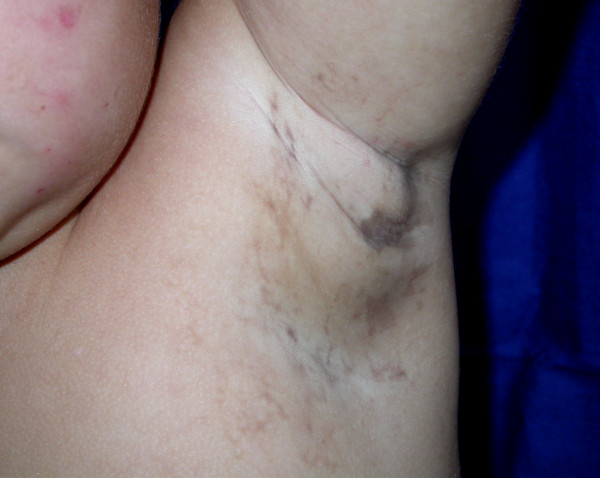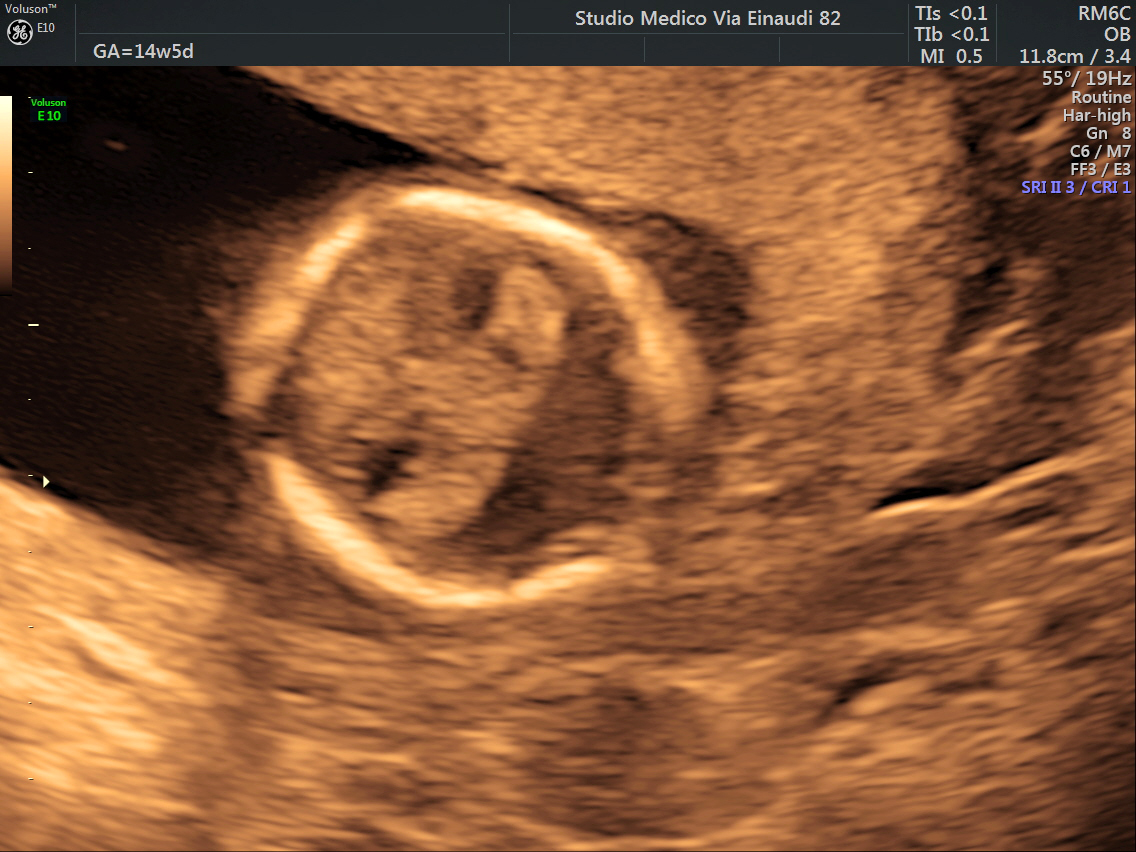|
List Of MeSH Codes (C16)
The following is a partial list of the "C" codes for Medical Subject Headings (MeSH), as defined by the United States National Library of Medicine (NLM). This list continues the information at List of MeSH codes (C15). Codes following these are found at List of MeSH codes (C17). For other MeSH codes, see List of MeSH codes. The source for this content is the set o2006 MeSH Treesfrom the NLM. – congenital, hereditary, and neonatal diseases and abnormalities – abnormalities – abnormalities, drug-induced – abnormalities, multiple * – Alagille syndrome * – Angelman syndrome * – Bardet–Biedl syndrome * – basal-cell nevus syndrome * – Beckwith–Wiedemann syndrome * – Bloom syndrome * – branchio-oto-renal syndrome * – Cockayne syndrome * – cri du chat syndrome * – De Lange syndrome * – Down syndrome * – ectodermal dysplasia * – Ellis–van Creveld syndrome * – focal dermal hypoplasia * – neurocutaneous syndromes * ... [...More Info...] [...Related Items...] OR: [Wikipedia] [Google] [Baidu] |
Medical Subject Headings
Medical Subject Headings (MeSH) is a comprehensive controlled vocabulary for the purpose of indexing journal articles and books in the life sciences. It serves as a thesaurus that facilitates searching. Created and updated by the United States National Library of Medicine (NLM), it is used by the MEDLINE/ PubMed article database and by NLM's catalog of book holdings. MeSH is also used by ClinicalTrials.gov registry to classify which diseases are studied by trials registered in ClinicalTrials. MeSH was introduced in the 1960s, with the NLM's own index catalogue and the subject headings of the Quarterly Cumulative Index Medicus (1940 edition) as precursors. The yearly printed version of MeSH was discontinued in 2007; MeSH is now available only online. It can be browsed and downloaded free of charge through PubMed. Originally in English, MeSH has been translated into numerous other languages and allows retrieval of documents from different origins. Structure MeSH vocabulary is ... [...More Info...] [...Related Items...] OR: [Wikipedia] [Google] [Baidu] |
Cri Du Chat Syndrome
Cri du chat syndrome is a rare genetic disorder due to a partial chromosome deletion on chromosome 5. Its name is a French term ("cat-cry" or " call of the cat") referring to the characteristic cat-like cry of affected children. It was first described by Jérôme Lejeune in 1963. The condition affects an estimated 1 in 50,000 live births across all ethnicities and is more common in females by a 4:3 ratio. Signs and symptoms The syndrome gets its name from the characteristic cry of affected infants, which is similar to that of a meowing kitten, due to problems with the larynx and nervous system. About one third of children lose the cry by age of 2 years. Other symptoms of cri du chat syndrome may include: * feeding problems because of difficulty in swallowing and sucking; * mutism; * low birth weight and poor growth; * severe cognitive, speech and motor disabilities; * behavioural problems such as hyperactivity, aggression, outbursts and repetitive movements; * unusual facial f ... [...More Info...] [...Related Items...] OR: [Wikipedia] [Google] [Baidu] |
Möbius Syndrome
Möbius syndrome is a rare congenital neurological disorder which is characterized by facial paralysis and the inability to move the eyes from side to side. Most people with Möbius syndrome are born with complete facial paralysis and cannot close their eyes or form facial expressions. Limb and chest wall abnormalities sometimes occur with the syndrome. People with Möbius syndrome have normal intelligence, although their lack of facial expression is sometimes incorrectly taken to be due to dullness or unfriendliness. It is named for Paul Julius Möbius, a German neurologist who first described the syndrome in 1888. In 1994, the "Moebius Syndrome Foundation" was founded, and later that year the first "Moebius Syndrome Foundation Conference" was held in Los Angeles. A charity for Möbius syndrome was set up and registered in the UK in 1999 by Linda Anderson from Tyne and Wear, whose son had been born with the condition in 1980. She campaigned for many years, held conferences and gave ... [...More Info...] [...Related Items...] OR: [Wikipedia] [Google] [Baidu] |
Marfan Syndrome
Marfan syndrome (MFS) is a multi-systemic genetic disorder that affects the connective tissue. Those with the condition tend to be tall and thin, with long arms, legs, fingers, and toes. They also typically have exceptionally flexible joints and abnormally curved spines. The most serious complications involve the heart and aorta, with an increased risk of mitral valve prolapse and aortic aneurysm. The lungs, eyes, bones, and the covering of the spinal cord are also commonly affected. The severity of the symptoms is variable. MFS is caused by a mutation in '' FBN1'', one of the genes that makes fibrillin, which results in abnormal connective tissue. It is an autosomal dominant disorder. In about 75% of cases, it is inherited from a parent with the condition, while in about 25% it is a new mutation. Diagnosis is often based on the Ghent criteria. There is no known cure for MFS. Many of those with the disorder have a normal life expectancy with proper treatment. Management ... [...More Info...] [...Related Items...] OR: [Wikipedia] [Google] [Baidu] |
Leopard Syndrome
Noonan syndrome with multiple lentigines (NSML) which is part of a group called Ras/MAPK pathway syndromes, is a rare autosomal dominant, multisystem disease caused by a mutation in the protein tyrosine phosphatase, non-receptor type 11 gene (''PTPN11''). The disease is a complex of features, mostly involving the skin, skeletal and cardiovascular systems, which may or may not be present in all patients. The nature of how the mutation causes each of the condition's symptoms is not well known; however, research is ongoing. It is a RASopathy. Noonan syndrome with multiple lentigines is caused by a different missense mutation of the same gene. Noonan syndrome is fairly common (1:1,000 to 1:2,500 live births), and neurofibromatosis 1 (which was once thought to be related to NSML) is also common (1:3500); however, no epidemiological data exists for NSML. Signs and symptoms An alternative name of the condition, LEOPARD syndrome, is a mnemonic, originally coined in 1969, as the conditi ... [...More Info...] [...Related Items...] OR: [Wikipedia] [Google] [Baidu] |
Laurence–Moon Syndrome
Laurence–Moon syndrome (LMS) is a rare autosomal recessive genetic disorder associated with retinitis pigmentosa, spastic paraplegia, and mental disabilities. Signs and symptoms Intellectual disability, hexadactyly, central diabetes insipidus, blindness (usually by 30 years due to central retinal degeneration). Genetics LMS is inherited in an autosomal recessive manner. This means the defective gene responsible for the disorder is located on an autosome, and two copies of the defective gene (one inherited from each parent) are required in order to be born with the disorder. The parents of an individual with an autosomal recessive disorder both carry one copy of the defective gene, but usually do not experience any signs or symptoms of the disorder. Diagnosis The syndrome was originally thought to have five cardinal features (and recently a sixth was added), on the basis of which a diagnostic criterion was developed: 4 primary features or 3 primary features and 2 second ... [...More Info...] [...Related Items...] OR: [Wikipedia] [Google] [Baidu] |
Incontinentia Pigmenti
Incontinentia pigmenti (IP) is a rare X-linked dominant genetic disorder that affects the skin, hair, teeth, nails and central nervous system. It is named from its appearance under a microscope. The disease is characterized by skin abnormalities that begin in childhood, usually a blistering rash which heals, followed by the development of harder skin growths. The skin may develop grey or brown patches which fade with time. Other symptoms can include hair loss, dental abnormalities, eye abnormalities that can lead to vision loss and lined or pitted fingernails and toenails. Associated problems can include delayed development, intellectual disability, seizures and other neurological problems. Most males with the disease do not survive to childbirth. Incontinentia pigmenti is caused by a mutation in the '' IKBKG'' gene, which encodes the NEMO protein, which serves to protect cells against TNF-alpha-induced apoptosis. A lack of IKBKG therefore makes cells more prone to apoptosis. ... [...More Info...] [...Related Items...] OR: [Wikipedia] [Google] [Baidu] |
Holoprosencephaly
Holoprosencephaly (HPE) is a cephalic disorder in which the prosencephalon (the forebrain of the embryo) fails to develop into two hemispheres, typically occurring between the 18th and 28th day of gestation. Normally, the forebrain is formed and the face begins to develop in the fifth and sixth weeks of human pregnancy. The condition also occurs in other species. Holoprosencephaly is estimated to occur in approximately 1 in every 250 conceptions and most cases are not compatible with life and result in fetal death in utero due to deformities to the skull and brain. However, holoprosencephaly is still estimated to occur in approximately 1 in every 8,000 live births. When the embryo's forebrain does not divide to form bilateral cerebral hemispheres (the left and right halves of the brain), it causes defects in the development of the face and in brain structure and function. The severity of holoprosencephaly is highly variable. In less severe cases, babies are born with norm ... [...More Info...] [...Related Items...] OR: [Wikipedia] [Google] [Baidu] |
Gardner's Syndrome
Gardner's syndrome (also known as Gardner syndrome, familial polyposis of the colon, or familial colorectal polyposis) is a subtype of familial adenomatous polyposis (FAP). Gardner syndrome is an autosomal dominant form of polyposis characterized by the presence of multiple polyps in the colon together with tumors outside the colon. The extracolonic tumors may include osteomas of the skull, thyroid cancer, epidermoid cysts, fibromas, as well as the occurrence of desmoid tumors in approximately 15% of affected individuals. Desmoid tumors are fibrous tumors that usually occur in the tissue covering the intestines and may be provoked by surgery to remove the colon. The countless polyps in the colon predispose to the development of colon cancer; if the colon is not removed, the chance of colon cancer is considered to be very significant. Polyps may also grow in the stomach, duodenum, spleen, kidneys, liver, mesentery, and small bowel. In a small number of cases, polyps have ... [...More Info...] [...Related Items...] OR: [Wikipedia] [Google] [Baidu] |
Neurocutaneous Syndromes
Phakomatoses, also known neurocutaneous syndromes, are a group of multisystemic diseases that most prominently affect structures primarily derived from the ectoderm such as the central nervous system, skin and eyes. The majority of phakomatoses are single-gene disorders that may be inherited in an autosomal dominant, autosomal recessive or X-linked pattern. Presentations may vary dramatically between patients with the same particular syndrome due to mosaicism, variable expressivity, and penetrance. Many phakomatoses are caused by mutations which alter functioning of the RAS–mitogen-activated protein kinase (MAPK) pathway that regulates cellular growth, differentiation, proliferation and death. This results in a tendency for individuals with these mutations to develop various types of benign or malignant tumors depending on the particular mutation. The presence of these tumors may result in functional and/or cosmetic problems depending on their type and location. History The ... [...More Info...] [...Related Items...] OR: [Wikipedia] [Google] [Baidu] |
Focal Dermal Hypoplasia
Focal dermal hypoplasia is a form of ectodermal dysplasia. It is a multisystem disorder characterized primarily by skin manifestations to the atrophic and hypoplastic areas of skin which are present at birth. These defects manifest as yellow-pink bumps on the skin and pigmentation changes. The disorder is also associated with shortness of stature and some evidence suggests that it can cause epilepsy. Genetics Focal dermal hypoplasia has been associated with PORCN gene mutations on the X chromosome. 90% of the individuals who are affected with the syndrome are female: the commonly accepted, though unconfirmed, explanation for this is that the non-mosaic hemizygous males are not viable. The differential diagnosis of focal dermal hypoplasia (Goltz) syndrome includes autosomal recessive Setleis syndrome due to TWIST2 gene mutations. It associated with morning glory anomaly, polymicrogyria, incontinentia pigmenti, oculocerebrocutaneous syndrome, Rothmund-Thomson syndrome and micro ... [...More Info...] [...Related Items...] OR: [Wikipedia] [Google] [Baidu] |





